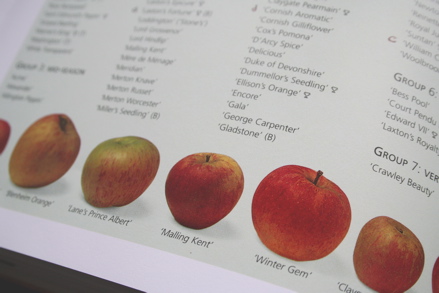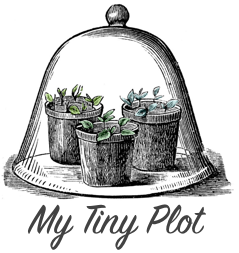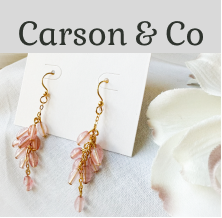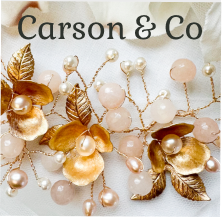Which Apple Variety?

As part of the redesign of my garden I have been busy researching which varieties of fruit trees I should plant. One of the most difficult decisions I’ve had to make is which apple varieties to go for. Apple’s are split into pollination groups. A group is made up of those trees that flower at the same time and therefore can transfer pollen to each other. So it’s imperative that you choose two varieties from the same group.
If only it was this simple then everything would be fine. However, some varieties in each group are either self-fertile or are what’s known as Triploid (ie they produce pollen but are unable to pollinate other trees). If you choose a Triploid variety (like Blenheim Orange, Bramley’s Seedling, or Jonagold), you effectively have to ensure that you have three trees in all, the Triploid, its pollinator and another tree to pollinate the pollinator. Complex huh?
Another consideration is how damp your conditions are. Apple trees don’t take kindly to sitting in wet conditions and there are a few varieties that will not tolerate damp and cold, – one of these being the very popular Cox’s Orange Pippin. So you need to avoid those if you live anywhere that’s not very mild.
Yet another consideration is whether the tree is a tip-bearer (bears its fruit on the tips of branches) or a spur-bearer (bears its fruit along the side of each branch). The first is fine for and orchard situation but if you want ornamental trees you need to choose spur-bearers.
One more consideration (stay with me, we’re nearly there) is whether the tree bears fruit yearly or biennially. If you choose two trees that are Biennial then you could be in trouble if they both flower in different years. Add to that the choice of whether you will be growing eating apples or cooking apples and you have one complex decision to make.
So after around 3 weeks of research, finally I have made my decision. I’ll be going for:
- Discovery: A well-flavoured, crisp early apple with a long shelf life. Bears heavy, regular crops. The skin is bright crimson and the blossom is very frost tolerant. Suitable for growing nationwide. Eating apple. Pollination group B.
- Greensleeves: A midseason crisp, green apple. Hardy and reliable with good disease resistance. Crops heavily and is suitable for growing countrywide. Self-fertile. Eating apple. Pollination group B
You might have noticed that Greensleeves is self-fertile. This is okay because Greensleeves will pollinate Discovery but Discovery doesn’t necessarily need to pollinate Greensleeves. This should ensure that Greensleeves will always crop.
I’ve found the RHS Fruit & Vegetable Gardening book invaluable in helping me make my decisions.
Anyone else thinking about buying apple trees? Which varieties did you go for and why?
 My Tiny Plot
My Tiny Plot



Well I’m very comfortable with your decisions :)
Last year I chose a 2 yr old Greensleeves M26 and Lord Derby M26 (Cooking). Both Group 2.
I had half a dozen good sized apples from both. The Greensleeves was VERY tasty – it surprised me how much so.
Lord Derby was also very good to eat even though a cooker – not too bitter.
This year I chose Discovery to contrast the green apple frm Greensleeves with the red of Discovery. I have it heeled in at the moment and hope to plant properly in the coming weeks.
I don’t think you will be disappointed..
I’m still waiting for mine to arrive. After some deliberation and a bit of advice from a friend who knows their apples (as it were) I’ve gone for Fiesta for eating and Newton’s Wonder for cooking, and a self-fertile Scrumptious for some earlier eating. I’m planning to espalier the Scrumptious in the back garden against a fence, and keep the others as bushes in the front garden.
Fingers crossed it’ll all work out!
Last winter I went for 2 yr old trees of Greensleeves (which my partner and I fell in love with after a taste-test at the community orchard at our allotments), Falstaff and Kidds Orange Red. The Kidds was simply scrumptious … I never knew fruit could taste so sweet! The greensleeves suffered badly this year with all the rain – only two applies survived, and they weren’t in a decent enough state to eat by the time they were big enough to harvest. Better luck this year!
Shhh! I’ve sneaked in a fair few onto my plot and growing them as cordons and over arches so that they don’t shade my neighbours’ plots. I got mine from Adam at Talaton Plants (extremely reasonably priced and excellent service) in Devon. We had extensive e-mail, then phoned conversations on which varieties to have based on my plot location, soil, aspect etc. etc.
I went for a mix of Heritage and fairly modern varieties to give me apples from late August through to March. Adam made sure the chosen apples would have overlapping blossom time and I stated I wanted no tip or biennial bearers. So the final choice from his 130 or so varieties was Ashmeads Kernel, Court of Wick, Discovery, Egremont Russet, Falstaff, Kidds Orange Red, James Grieve, Princesse (aka King of the Pippins), Spartan and Sunset. I added Scrumptious from Ken Muir. All have been fantastic and very different in taste. An apple tasting day a year later meant I just had to have a new variety, Herefordshire Russet in my garden, to which I added a Fiesta and Red Windsor. I was able to get these via my allotment society discount from DT Brown.
I bought five dwarf trees and lined a pathway with them on both sides. For the five trees, I bought five different varieties that bear at different times AND that pollinate each other.
My goal was to have fresh apples over half the year or more. I ordered from Stark Bros (www.starkbros.com): Lodi (early July), Zestar (early Aug), UltraMac (early Sept), Red Rome Beauty(mid-Oct), and Granny Smith (mid-late Nov).
I like some of these varieties a lot more than others, but a fresh apple beats a favorite that’s endured shipping or storage.
Never done it myself, but I had heard it’s tricky. Now I know why!
I’ve always wanted Beauty of Bath, because the apples are so utterly, exquisitely delicious; very sweet, but very sharp at the same time, with a wonderfully crispy, crunchy quality. Can’t beat it, but I dread to think what ghastly combinations of other varieties you’d need to make it work…
Have you seen the ‘leg’ trees that are now becoming very popular? They have a massive yield for the size – they give a far better yield apparently than standard orchard varieties. I’m considering growing them when we move.
I’ve grown Discovery and Greensleeves – both delicious apples. Discovery however does not have a long shelf life – quite the opposite in fact (in common with most early varieties).
Rick
Have to agree with Soilman – Beauty of Bath is so sweet and juicy – and one of the first – which is an added delight.
TopVeg
I have a lot of mature apple trees, Discovery, Cox, Russett, Bramley and Worcester P. The Cox and the Worcester are by far the best for taste and cropping, they are all in tree form and are quite old but still they are very productive. I have two basic problems with my apples though – what to do with them all, and their shelf life is fairly short.
Hi
What about trying that research centre whose name escapes me – they can tell you which varieties come from your area so in theory should grow well. I think the research centre begin with B and is in Kent, has heritage varieties etc.
Just a thought.
The place in Kent is Brogdale – situated just outside Faversham.
I purchased a M27 (very dwarfing) Red Devil (self-pollinator) apple tree in June 2006. The year I bought it (was fully polinated by June of course) it produced seven or eight huge apples with the most delicious and beautiful pink/red flesh and crimson skin…no mean result for a tiny tree which was repotted that summer. 2006 was a great summer though.
Last year was a different story. It blossomed too early because of the sunny April and was battered by the torrential rain and wind in May and June. The situation was/is compounded by the fact that my backyard is 900ft up in Pennines, and although it gets full sun, it also gets the full blast of South-Westerlies. Even though it’s a self-pollinator, I’m thinking about getting it a partner to see if that helps – there are very few pollinator partners up here.
Good luck.
Thanks for the tip about Brogdale. The website is here http://www.brogdale.org/nfc_plants1.php?plantid=7 and you can search for each variety of apple to see what it looks like. Very useful. Apparently there are 1880 varieties of apple.
I went for Egremont Russet Dessert after the woodlice ate my Cox Orange Pippin. I waited a few years and planted in the same spot. Because I planted this one as I liked the description in the St Michael’s vegetable gardening Book. I also have a Bramley’s Seedling I hope it likes my garden, I have only just recently planted this one, it was a bit wet last year as it rained for about seven weeks non stop, so lets hope it likes a wet garden. I also have a few gooseberries bushes, a redcurrant and a blackcurrant.